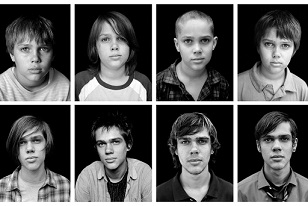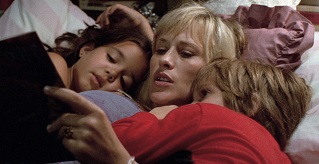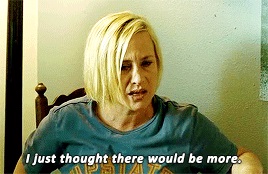This entry is about Selma, a historical drama film made in 2014 depicting the events around the voting-rights march from Selma to Montgomery, Alabama, led by Martin Luther King Jr. in 1965. To be honest, I started this entry on Selma years ago when I watched it, but the themes addressed have only gotten more relevant to the current state of affairs in the U.S. that it was difficult for me to finish this entry. When I watched a recent documentary about Martin Luther King Jr. (King in the Wilderness), I felt it was time to write about them both. The two entries are very closely tied, but in order to keep each one focused and a reasonable length, I kept the entries separate.
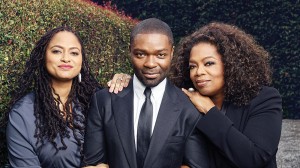 Selma’s director Ava Marie DuVernay became known for her break-out film Middle of Nowhere (2012), for which she won Best Director at the Sundance Film Festival. Selma was nominated for the Academy Award for Best Picture, making DuVernay the first female African-American director to have her film even nominated for this Oscar. (Women still remain largely unrecognized in the Best Director Oscar category). The nomination was well-deserved, the film complete with beautiful cinematography and a powerful soundtrack. The acting was also quite solid and not overly dramatic, despite the gravity of the events being depicted.
Selma’s director Ava Marie DuVernay became known for her break-out film Middle of Nowhere (2012), for which she won Best Director at the Sundance Film Festival. Selma was nominated for the Academy Award for Best Picture, making DuVernay the first female African-American director to have her film even nominated for this Oscar. (Women still remain largely unrecognized in the Best Director Oscar category). The nomination was well-deserved, the film complete with beautiful cinematography and a powerful soundtrack. The acting was also quite solid and not overly dramatic, despite the gravity of the events being depicted.
Like Spielberg with Lincoln, it is interesting which story director DuVernay decided to focus on. Both films focus on quite short time frames that exclude some very famous moments, so perhaps benefit from some explanation of the context. Like with Lincoln, I think this choice is intentional in order to show how hard-fought these battles for change were and how things weren’t simply fixed with Lincoln abolishing slavery or King’s “I Have a Dream” speech in Washington.
The 15th Amendment was ratified in 1870, declaring it unconstitutional to deny someone the right to vote based on “race, color, or previous condition of servitude.” By the time of the march from Selma in 1965, African-Americans technically had the right to vote for nearly a century. However, methods ranging anywhere from unreasonable literacy tests, to steep poll taxes, to blatant intimidation were used to greatly limit the ability for black Americans to actually vote. Even after the abolition of slavery, the Jim Crow laws–implemented throughout the former Confederacy states of the south–were used to legally enforce racial segregation, with “separate but equal” facilities for black and white folks. 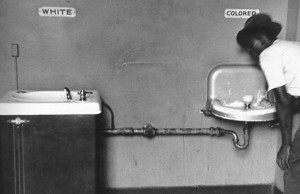 While separate was certainly true, equal rarely was. From restrooms to schools to buses, the facilities for black people were often underfunded or sometimes even nonexistent, effectively depriving many rights and services from free black men and women. With these laws, people were still legally allowed to discriminate and deny service solely based on the color of someone’s skin, and the registrar could discriminatorily deny the right to vote through inconsistent scrutiny.
While separate was certainly true, equal rarely was. From restrooms to schools to buses, the facilities for black people were often underfunded or sometimes even nonexistent, effectively depriving many rights and services from free black men and women. With these laws, people were still legally allowed to discriminate and deny service solely based on the color of someone’s skin, and the registrar could discriminatorily deny the right to vote through inconsistent scrutiny.
After World War II, African-Americans began to demand more rights. Many had chosen to fight alongside their fellow citizens, and justly felt they deserved full rights for their service. The Civil Rights Movement fighting against segregation and racial inequality began to gain momentum, and was enhanced in the 1960s by other groups also fighting for more rights. In 1964, the Civil Rights Act was passed, outlawing on a federal level any discrimination based on race, color, religion, sex, or national origin. This was an important step towards finally tearing down segregation, ending the Jim Crow laws, and providing equal employment opportunities. The march from Selma depicted in this film was specifically focused on getting the government to actually enforce the 15th Amendment and crack down on the discriminatory barriers keeping blacks from voting. Selma is in a county that was and still is over 50% African-American, but, at that time, only 1% of African-Americans in the county were registered to vote. The film begins with Annie Lee Cooper (played by Oprah Winfrey) being denied once again when attempting to register to vote. We also see the tragic deaths of four young black girls in the 16th Street Baptist Church bombing of 1963 by a KKK member. With this, director DuVernay successfully sets the stage.
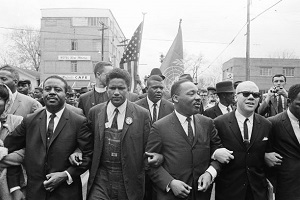 Throughout this film, we are able to see the great and pragmatic leadership of Martin Luther King Jr. King works on several fronts. With local leaders near Selma, he leads demonstrations demanding increased protection of constitutional rights–particularly voting rights–of African-Americans; meanwhile, King works with President Lyndon B. Johnson to push forward a voting rights bill at the federal level. After the unjust and violent death of Jimmie Lee Jackson during a peaceful protest, King works with leaders of the Student Nonviolent Coordinating Committee (SNCC) and Southern Christian Leadership Council (SCLC) to organize the march from Selma to Montgomery to increase their voice for their demands.
Throughout this film, we are able to see the great and pragmatic leadership of Martin Luther King Jr. King works on several fronts. With local leaders near Selma, he leads demonstrations demanding increased protection of constitutional rights–particularly voting rights–of African-Americans; meanwhile, King works with President Lyndon B. Johnson to push forward a voting rights bill at the federal level. After the unjust and violent death of Jimmie Lee Jackson during a peaceful protest, King works with leaders of the Student Nonviolent Coordinating Committee (SNCC) and Southern Christian Leadership Council (SCLC) to organize the march from Selma to Montgomery to increase their voice for their demands. 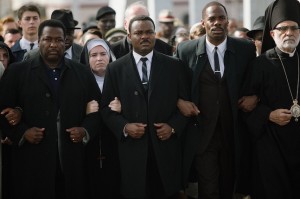 When Alabama Governor Wallace denounces the march and says he will use whatever means necessary to prevent it, King asks President Johnson for federal protection of this protest. During the first attempt on March 7 to cross the Edmund Pettus Bridge on the way to Montgomery, the marchers are brutally beat down and tear gassed by state troopers and county police in what would later be known as “Bloody Sunday.” In the second attempt, the marchers are joined by allies—white and black—from churches and other activist groups around the country. Still without federal protection, however, King chooses to not lead the march across the bridge. With the third attempt on March 21, President Johnson promises protection, and the protesters arrive to the capital of Alabama on March 25.
When Alabama Governor Wallace denounces the march and says he will use whatever means necessary to prevent it, King asks President Johnson for federal protection of this protest. During the first attempt on March 7 to cross the Edmund Pettus Bridge on the way to Montgomery, the marchers are brutally beat down and tear gassed by state troopers and county police in what would later be known as “Bloody Sunday.” In the second attempt, the marchers are joined by allies—white and black—from churches and other activist groups around the country. Still without federal protection, however, King chooses to not lead the march across the bridge. With the third attempt on March 21, President Johnson promises protection, and the protesters arrive to the capital of Alabama on March 25.
By the time of the events of Selma, King was already well-respected and had received the Nobel Peace Prize for his nonviolent activism. King had the power to inspire people to rise up with his moving speeches; but with that, he remained aware of the risk he put people in by asking them to protest with him and always emphasized nonviolent protest. In the film, King at times struggles to decide how best to act and is criticized by some activists for not doing enough. However, he carefully considers how to increase the impact of each protest. He is able to direct the emotional pain of losing a loved one and the feeling of injustice to rally a community as well as any sympathizers, saying in one speech, 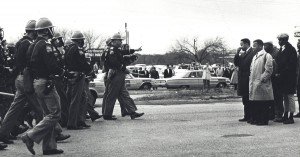 “I am appealing to men and women of God and goodwill everywhere, white, black, and otherwise… If you believe all are created equal, join our march against injustice and inhumanity.” King also harnessed the media coverage–such as the televising of the horrific violence of “Bloody Sunday”–to increase support from the people and put more pressure on the President.
“I am appealing to men and women of God and goodwill everywhere, white, black, and otherwise… If you believe all are created equal, join our march against injustice and inhumanity.” King also harnessed the media coverage–such as the televising of the horrific violence of “Bloody Sunday”–to increase support from the people and put more pressure on the President.
There was some criticism of this film for portraying President Johnson too negatively, given that he is often respected for his work focused on eliminating poverty and racial injustice. However, I appreciated the realistic portrayal of President Johnson. In the film, he is certainly not glorified as a civil rights hero, but he is still a man led by his principles. The mutual respect between King and Johnson is shown as King is seen several times trying to convince LBJ of the need to act, both for the sake of civil rights and good politics. LBJ pushes back against King’s request for voting rights protection legislation; Johnson fears meeting a high amount of resistance, especially so soon after the hard-fought passage of the Civil Rights Act of 1964. However, President Johnson firmly condemns the violent handling of the march by Governor Wallace, telling him, “I’ll be damned to let history put me in the same place as the likes of you.” Johnson is seen as a politician trying to balance policies through turbulent times within the country as well as overseas in Vietnam. Even the sheriff and Governor Wallace–while, in no uncertain terms, are unlikeable for their role in the violence and support of segregation–aren’t portrayed as unrealistic villains, but rather as dangerously led by their segregationist ideals such that they believe they are justified in their violence.
After the march from Selma, President Johnson addressed Congress in a powerful speech appealing that this was not an issue just for the South, Democrats, or black Americans, but rather all Americans. He also reminded the country that, although slaves were freed over a century ago, the events of Selma were a reminder of how African-Americans still don’t have the rights of a free man. President Johnson was a strong voice because, as a devout Christian from the South, he argued for the moral importance for people all across the U.S. to uphold the country’s promise for freedom and opportunity to all peoples. After his moving speech, the Voting Rights Act of 1965 was successfully passed, which outlawed many of these discriminatory devices that historically disenfranchised racial minorities. Since the Voting Rights Act, voter registration of African-Americans has significantly increased, as well as the number of African-Americans holding an elected position. This Act of course also helped reduce barriers for other minorities, including Hispanics and Asians.
Behind the scenes, there were a couple of things that made the production of this movie interesting. The first is that apparently the speeches of Martin Luther King Jr. are copyrighted by the King estate, meaning the exact words of his speeches could not be used in Selma. Therefore, DuVernay had to write the speeches in this film that captured the essence of King without using his words. This must have been extremely difficult because King gave such strong and compelling speeches with carefully selected words. 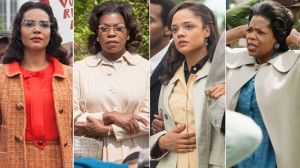 The original movie script was written by Paul Webb, but DuVernay made significant changes to it, including reducing the focus on President Johnson and increasing the role of female characters. (The original apparently solely consisted of one phone call from Coretta Scott King). As mentioned before, this choice resulted in some criticism, but DuVernay did not want to make a movie celebrating the accomplishments of one white politician, but rather the collective impact of many black men and women.
The original movie script was written by Paul Webb, but DuVernay made significant changes to it, including reducing the focus on President Johnson and increasing the role of female characters. (The original apparently solely consisted of one phone call from Coretta Scott King). As mentioned before, this choice resulted in some criticism, but DuVernay did not want to make a movie celebrating the accomplishments of one white politician, but rather the collective impact of many black men and women.
In an interview, DuVernay commented on her intentional choice to call upon the people of Selma for both the black and white extras in the marching scenes. She said watching everyone work through these tough scenes together was an important way for the people of Selma to address their painful past and underlined for her how important it is to keep telling these stories.
Director DuVernay has gained a lot of acclaim with her recent works. Middle of Nowhere had a budget of $200,000, while Selma had a budget of $20 million. She said the big jump in budget and crew took some getting used to. DuVernay’s newest release A Wrinkle in Time had a budget of $103 million, so I’m sure that took some getting used to as well. She created an independent film distribution company (ARRAY) as one way to encourage other African-American filmmakers.
Looking at this movie, it is wonderful to be reminded of the progress the United States has made. However, this movie is also a reminder that this fight is still happening. The Jim Crow laws have been outlawed, but the New Jim Crow (as described in author Michelle Alexander’s book) is the disproportionate incarceration and therefore disenfranchisement of black men due to the War on Drugs. Also, some states still have discriminatory legislation, such as photo ID requirements that are supposedly to reduce voter fraud, but actually disproportionately impact minorities and working-class individuals who aren’t always able to acquire one of the approved IDs.
Additionally, there has recently been more media coverage about the unwarranted violent treatment and too often death of black men and occasionally women by police officers. 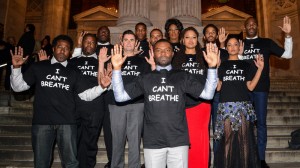 Filming for Selma started before the deaths of Mike Brown and Eric Garner, but by its release, Selma deeply resonated with the important conversations that were happening around the Black Lives Matter (BLM) movement. The BLM protests in Ferugson are alluded to in the ending credits song (“Glory” by Common and John Legend, which won an Oscar): “This is why we walked through Ferguson with our hands up.” There is certainly a need for action—notably nonviolent action—today. The BLM movement is addressing how a deep-rooted, systemic racism—such as disproportionate incarceration rates and violence by the police force toward black people—still exists in the U.S. today.
Filming for Selma started before the deaths of Mike Brown and Eric Garner, but by its release, Selma deeply resonated with the important conversations that were happening around the Black Lives Matter (BLM) movement. The BLM protests in Ferugson are alluded to in the ending credits song (“Glory” by Common and John Legend, which won an Oscar): “This is why we walked through Ferguson with our hands up.” There is certainly a need for action—notably nonviolent action—today. The BLM movement is addressing how a deep-rooted, systemic racism—such as disproportionate incarceration rates and violence by the police force toward black people—still exists in the U.S. today.
After the death of Jimmie Lee Jackson, King gives a moving speech calling for action against the injustice that allowed his death. He makes it clear that non-action supports the problem when he says, “How many fingers were on that trigger? Every person who allows this to continue.” All the progress we have made has been due to people bravely fighting against the status quo.

